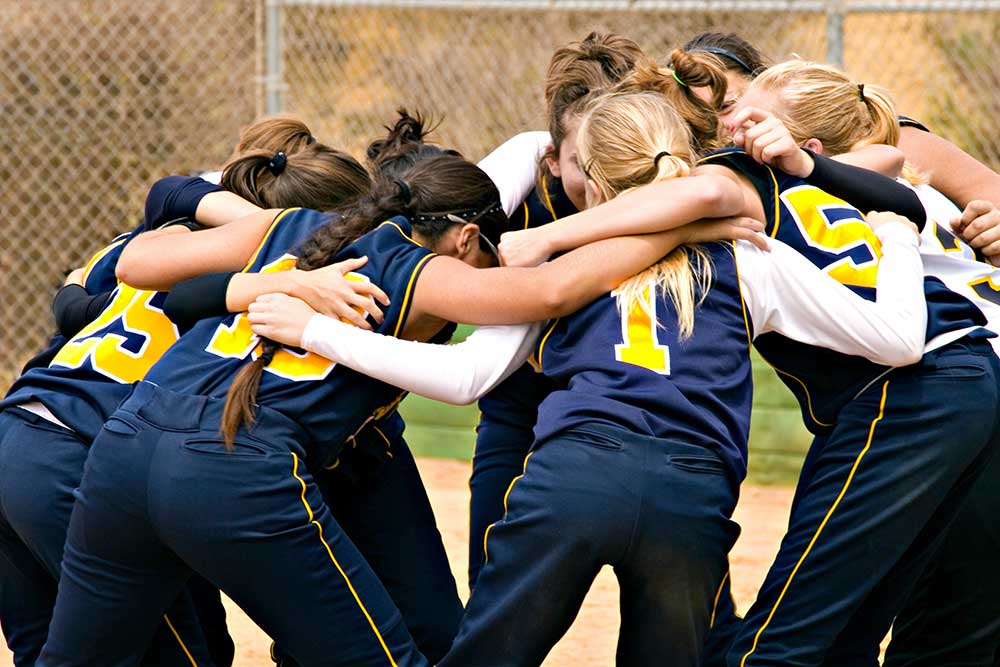
Youth sports are a fantastic way to build confidence, discipline, and lifelong habits of fitness. But as young athletes train harder and compete more, the risk of injury rises, especially from overuse. These injuries can creep in quietly, often without a single dramatic incident, and sideline a child just as they become fully engaged in their sport.
Dr. Richard Cunningham, board-certified orthopedic surgeon and fellowship trained sports medicine specialist at Vail-Summit Orthopaedics & Neurosurgery (VSON), sees this often in his clinic. “When a young athlete comes in with pain that’s been slowly worsening over time, it’s almost always a sign of overuse,” says Dr. Cunningham. “The earlier we intervene, the easier it is to get them back to full health, and back on the field.”
In this article, Dr. Cunningham breaks down how to recognize a youth sports injury early, how to approach injury prevention in youth sports, and what to expect during recovery.
What Is an Overuse Injury?
Overuse injuries happen gradually when repetitive stress is placed on muscles, tendons, or growth plates. These injuries are different from acute injuries, which happen suddenly due to a fall or collision. Common types of youth sports injury caused by overuse include:
- Little League elbow and shoulder
- Shin splints and stress fractures
- Osgood-Schlatter disease
- Patellar and Achilles tendinitis
- Youth concussions from repeated head contact
“We often forget that kids aren’t just small adults,” says Dr. Cunningham. “Their bones are still growing, and their bodies respond differently to stress.”
Warning Signs of a Youth Sports Injury
Because overuse injuries develop slowly, they can be easy to miss. Watch for these signs:
- Pain that increases with activity and improves with rest
- Swelling or tenderness at a joint or tendon attachment site
- Limping or altered movement pattern
- A drop in performance or hesitation to participate
- Persistent headaches, confusion, or balance issues after contact (a sign of youth concussions)
If symptoms last more than a few days or interfere with regular activity, it’s time to schedule a professional evaluation. Early care can make a big difference in preventing long-term issues.
Tips for Injury Prevention in Youth Sports
Preventing overuse injuries requires a thoughtful, long-term approach. Dr. Cunningham recommends the following:
Build in rest
Make sure young athletes take at least one day off per week from their primary sport. Rest days allow the body to heal and reduce the risk of repetitive stress.
Delay early specialization
Kids who play multiple sports are less likely to experience burnout and overuse injuries. They also develop more balanced strength and coordination.
Emphasize proper technique and warm-ups
Dynamic warm-ups, strength training, and proper skill instruction help reduce injury risk and support better performance.
Pay attention to pain
“No pain, no gain” does not apply to young athletes. Pain is a signal that something is wrong.
Monitor for signs of youth concussions
Repeated hits to the head—even without full concussions—can cause cumulative brain stress. Make sure your child is monitored closely after any collision or fall.
“The goal isn’t just to treat injuries. It’s to help young athletes stay active and healthy for the long haul,” says Dr. Cunningham. “That means working with coaches and parents to create smarter training plans.”
Recovery and Returning to Sport
If your child is diagnosed with a youth sports injury, their treatment will depend on the severity and type of injury. Rest, physical therapy, and a gradual return to activity are the foundation of recovery.
For youth concussions, recovery must be taken especially seriously. Kids should not return to play until all symptoms have resolved and they’ve been cleared by a medical provider. This process often involves:
- Rest from physical and cognitive activity
- Stepwise return to light aerobic exercise
- Gradual reintroduction to full-contact practice
- Regular symptom checks
“We work closely with families to tailor recovery plans for each athlete,” says Dr. Cunningham. “Physical healing is important, but so is maintaining confidence and emotional health during recovery.”
When to See a Sports Medicine Specialist
If your child is dealing with ongoing pain, reduced performance, or possible signs of concussion, don’t wait. The earlier a youth sports injury is evaluated, the more options are available for effective treatment and recovery.
Dr. Cunningham specializes in youth sports medicine and understands the unique needs of growing athletes. From injury prevention in youth sports to managing complex youth concussions, he partners with families to protect long-term health and performance.
Youth Sports Injury Care in the Vail Valley – Dr. Richard Cunningham
Whether your child is recovering from a youth sports injury or you’re looking to prevent future problems, Dr. Cunningham can help. With a commitment to conservative care, expert diagnostics, and personalized treatment plans, he supports young athletes at every stage of their journey.
If you’re searching for guidance on injury prevention in youth sports, or the best approach to managing overuse injuries, reach out to Dr. Cunningham’s team today. We’re here to help your child play strong, stay safe, and enjoy the sports they love.
